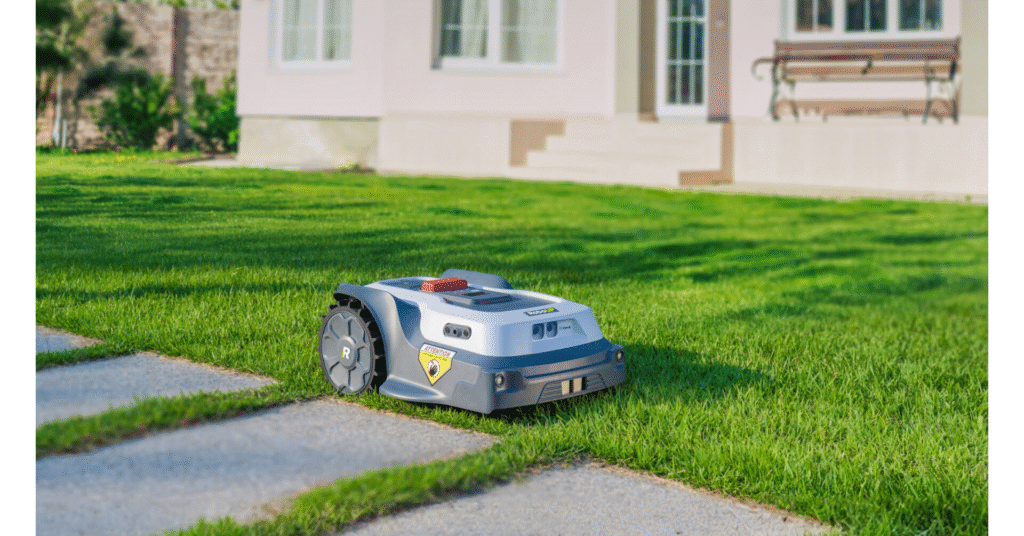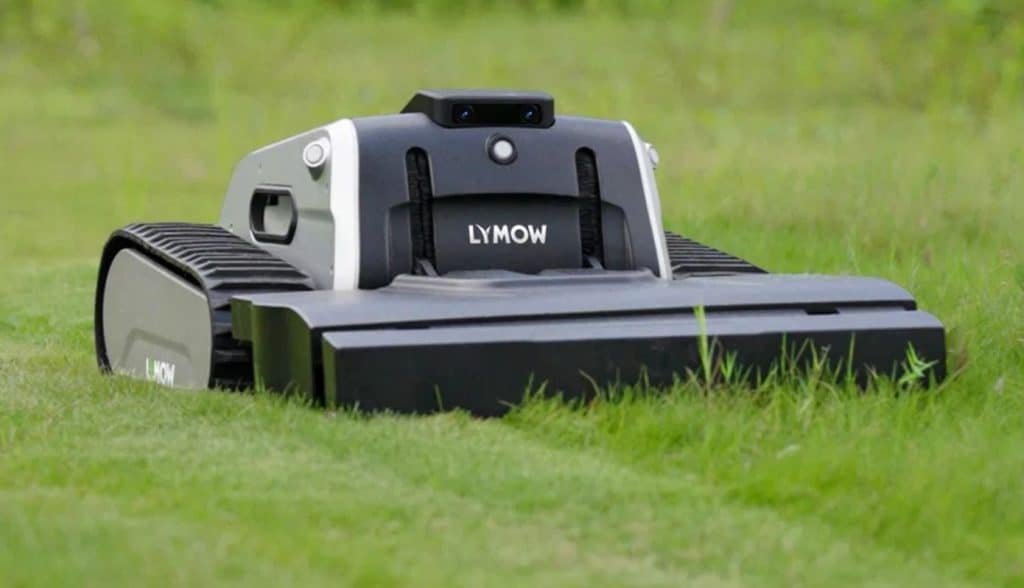There is a newer RoboUP mower model available. See the review here.
The RoboUP Rhino robot mower marketplace is being flooded with new upstart companies looking to create the next big tech gadget.
Some of these companies, like Mammotion, have delivered on their promises (for the most part) and are continuing to thrive.
Unfortunately, some other Kickstarter or Indiegogo robot lawn mower projects have failed to deliver anything other than promises.
But this isn’t just a phenomenon with robot lawnmowers. Many new technologies have this sort of teething period as the players in the market shift and move until only a few remain.
One of these companies looking to make a name for itself is RoboUP. They are planning to release their production version of the Rhino 1 robot mower later this year.
But will RoboUp be a big player or just another Kickstarter campaign that fails to deliver?
Below, we’ll review their Rhino 1 and see if it has what it takes to compete in a very competitive robot mower marketplace.
Who Is RoboUP?
If you haven’t heard of RoboUp, you’re probably not alone. RoboUp is a new company that was founded solely to produce robot lawnmowers. However, the founders were involved in electronic and robotic control systems for industrial applications as far back as 1996.
RoboUp is headquartered in Shenzhen, China which is home to China’s technology and manufacturing sector.
Their first mower was the TM1 and came in a few variations. The mower had mixed reviews and used mostly off-the-shelf parts and technology seen in other robot mowers being made in China.
The Rhino 1 is their newest offering and is said to contain new technology, a completely new drivetrain, and an improved navigation system.
The RoboUP Rhino 1
The most notable change with the Rhino 1 over RoboUP’s previous mower is the addition of an all-wheel drive propulsion system.
All four wheels use in-hub motors to help the Rhino 1 tackle steeper terrain and rooted areas of your lawn or property that may stall some other mowers.
RoboUp also added another cutting disc, bringing the total number of cutting blades up to 8, which is more in line with newer high-end mowers. This move also doubles the cutting width over their previous mower.
Another feature is the front steering. The front wheels on the Rhino do have steering and don’t just rely on the wheels turning at different RPMs to rotate the mower. This definitely adds to the complexity of the mower but it does allow for more precise pathing as it mows around obstacles.
The Rhino 1 seems to draw a lot of inspiration from the Mammotion Luba line of mowers, specifically the Luba 2. This isn’t a bad thing as the Luba has been a success and the Luba 2 looks to be a respectable second-generation mower.
RoboUP Rhino 1 Navigation
The Rhino 1 does not use a perimeter wire and instead uses a combination of GPS and a vision system. This is combined with perimeter bumpers on the mower to detect collisions.
RoboUP hasn’t divulged the exact details of the new vision system they are using. It appears to be a similar or slightly upgraded version of the vSLAM system they claimed to use in their previous generation mowers.
RoboUP also says the final production model will use a “one-click” style setup where the user presses a button and the mower maps the yard automatically.
Our test version didn’t have this feature and instead used the more common method of piloting the mower via the app. During the process, the mower creates a 3D map of the lawn along with the perimeter boundaries.
You do have to install the RTK base station for Rhino 1 and there must also be a good signal over the majority of the lawn.
Slight dips in signal are handled via the vision system, but extended drop-outs or a loss of the RTK signal will cause the mower to stall and require the user to reset it.
The Rhino 1 also features side and front bumpers to detect collisions. Interestingly, the newest Luba models removed these due to customer complaints.
Side bumpers can often catch on rocks, trees, or other obstacles and cause the mower to stop even though it isn’t in any danger.
Many Luba owners removed the bumpers on the first-generation mower, but we’re not sure if these can be removed on the Rhino 1.
We had no problems with this issue in our testing, but our lawn was mostly open. A lawn with dense ornaments or large landscaping rocks may have problems.
RoboUP Rhino 1 Performance
The cutting performance of the Rhino 1 was on par with other modern mowers using a two-disc system. The mower cut in parallel lines when possible and the only deviation was in zones that had no room for long mowing. In these areas, the Rhino 1 would use more of a random pattern.
Despite being all-wheel drive, the Rhino 1 is remarkably quiet and makes far less noise than many mowers we’ve tested.
The average robot mower isn’t loud by any means, but the Rhino 1 appears to be quieter. If you plan on scheduling your mowing at night, this is definitely a feature you may like.
The app was an area that left us a little disappointed. The Rhino 1 app was sort of bare-bones and lacked the polish of other second-generation mowers that are becoming more popular.
This is a trend we’ve noticed with recent mower startups and they seem to have difficulty creating a competitive app in line with the more established manufacturers.
The Rhino 1 app did work, but we experienced several crashes that forced the app to restart. The app also lacked advanced features around scheduling and alerts that many other mowers now have as standard.
RoboUP Rhino 1 Final Review
The Rhino one is definitely an improvement over RoboUP’s original robot mower. The addition of all-wheel drive and an added cutting disc makes it a much better performer for larger lawns or lawns with rolling terrain.
At this point, it’s hard to form a definitive opinion on Rhino 1 since it’s essentially in a pre-beta stage.
The Rhino 1 was just shown off at the Consumer Electronics Show in January, and the final version may have several improvements over the test version we had our hands on.
What we can say for sure is that RoboUP did listen to their past customers when it came to shortcomings with the first generation of mowers.
Customers complained about navigation issues as well as the mower’s inability to handle more complex lawn layouts. This included lawns with steeper inclines that would cause the original RoboUP mower to come to a stop.
The Rhino 1 addresses most of those concerns and does so in a package that looks far better than its original offering.
The Rhino 1 has not started shipping yet and there is no word on an exact release date from RoboUP.
We are hoping they use this time to make improvements to the app, specifically around customization options for scheduling. We would also like to see a way to disable the side bumpers to prevent the mower from stopping for no reason.
Deactivating the front bumper may be too much of a safety risk, but the ability to turn off the side bumpers will likely solve many issues that may arise in crowded lawn layouts.
Overall, the Rhino 1 is a strong second attempt from RoboUP and one that looks to solve many of the problems that many of their customers had in the past.
We’re looking forward to seeing the final production models so we can see how RoboUP tackles the few remaining nagging issues with the app and navigation system.
With a few improvements and a competitive price, the Rhino 1 may be a solid competitor in the growing robot mower marketplace.












